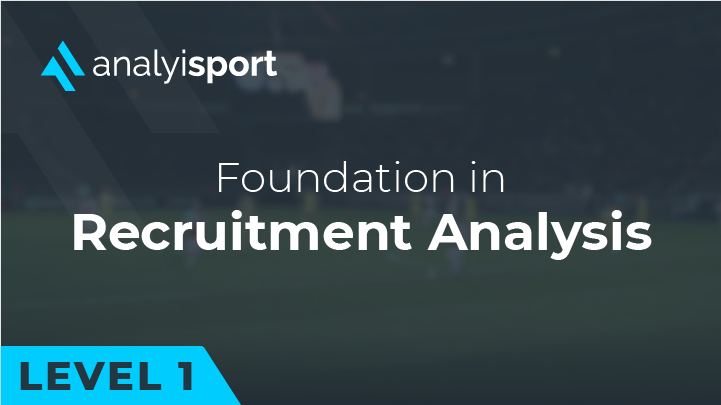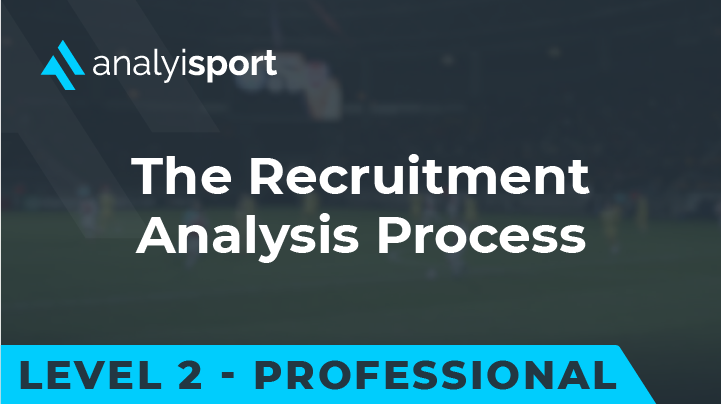How is data-driven scouting and recruitment used in football?
How is data-driven scouting and recruitment used in football?
As the football industry continues to invest in data and technology, the area of scouting and recruitment is no exception.
No longer do football clubs leave recruitment decisions solely up to the judgement of scouts. Potential recruits now need to impress with their stats, rather than just being pleasing on the eye.
The idea is that this style of recruiting will ultimately lead to more objectivity when clubs make decisions, and it has proven to work.
Premier League clubs have already adopted a data-led approach in the scouting department. Brentford FC have relied on data since they were in the Championship in order to assemble a squad fit to compete against the best in England.
Similarly, Brighton FC use data to identify undervalued players on the transfer market. Such has been the success of Brighton’s model that the likes of Chelsea FC are now looking to emulate it.
Under new owners since 2022, and despite an initial capital investment in the squad, Chelsea plan to implement a long-term recruitment plan that is reliant on data.
What is data-driven scouting?
A data-driven scouting system involves the analysis of player performance data taken from football matches in order to make recruitment decisions.
The biggest databases record data for players across thousands of men’s and women’s leagues across the world, both professional and semi-professional.
Whilst raw data can be useful, it’s how it’s interpreted that makes the difference at the elite level of football. Using algorithms, clubs can extrapolate meaningful insights from data by applying context to the raw numbers.
Analysts apply context to the pure statistics so that coaches can understand the impact a player has in matches. A player that consistently scores highly in passing data but who plays in a team that is particularly dominant may not actually be impacting the game in a significant way.
Advanced metrics use positional tracking and other factors to determine a player’s value in a particular area relative to other players who might play in different leagues and circumstances.
This sort of analysis allows much more informed decisions to be made when looking for players to add to a squad. Clubs are now able to identify which players are adding notable value in teams that are underperforming and ‘can extract data about a player which shows how they perform in the type of situations they might encounter at their new club’.
AnalyiSport explains how ‘the biggest clubs tend to have their own in-house data teams’, but that third-party companies also offer clubs their services.
TransferLab replaces a club’s need for an in-house data team. Using its own advanced metrics, the platform offers its partners detailed and meaningful statistical analysis on over 100,000 players across the world in both men’s and women’s football, allowing them to filter through players based on desirable performance characteristics.
Why are Chelsea moving to data-driven scouting?
Chelsea FC came under new ownership in 2022 and new owner Todd Boehly wants to develop a more efficient recruitment model for the club.
His arrival has seen ‘the departures of senior figures from the old regime’ as the scouting department begins to look more like that of Brighton FC, a club that Boehly is understood to admire.
In 2022 Chelsea signed a deal with talent identification platform AiScout, making them the club’s Official Academy Research Partner.
According to Chelsea’s head of youth recruitment and assistant head of youth development Jim Fraser, the innovative platform will allow the London-based club to ‘identify, recruit and develop the best talent more effectively and efficiently than ever before’.
The software is intended to be used alongside Chelsea’s traditional scouting methods to identify new recruits before other clubs do. Ben Smith, head of research and innovation at Chelsea, explains how the new partnership will enhance their existing structure.
He believes that AiScout will allow them to widen the scope of the scouting department so that they can send their scouts out to see players more quickly and effectively.
With this data-led strategy, Boehly intends to recruit for the long term, and the owner has already voiced his desire to integrate academy data into the first team set up. ‘Our goal is to really bring a team together that, with the academy, with the first team, with the incremental clubs we want to acquire and develop, all of that need to be a well-oiled machine’.
Which other teams rely on data-driven scouting?
Data-led analysis is now being embraced throughout Europe, but each club tends to take their own approach. Some have been more successful than others.
Liverpool FC are owned by American holding conglomerate Fenway Sports Group (FSG) who are known for their pioneering approach to data use in Major League Baseball.
Under FSG’s guidance, Liverpool have reaped the rewards of a data-inspired recruitment plan, having recently won the Champions League and the Premier League with a squad built specifically to do so.
Elsewhere, Toulouse FC have received plaudits for their recruitment since being relegated from Ligue 1 in 2020. The French side trusted in data analysis when hiring players from the Japanese and Scandinavian leagues and have since solidified their status back in the top division.
Belgian club RSC Anderlecht are also known for placing a large emphasis on data within their recruitment system.
Similar to the setup at Chelsea, data-driven scouting at Anderlecht is designed to accompany video and live scouting. The head of recruitment Dries Belaen explains how the club’s analysts ‘use data in the beginning phase of the recruitment process and also right at the end’.
Olympiacos, meanwhile, have demonstrated the success that can be achieved by partnering with third party data-led scouting platforms. The Greek side works with Spanish company Driblab to identify transfer targets.
Evidently data is becoming crucial for scouting and recruitment teams throughout the football industry, no matter where they are or how they’re using it.
The future of data-driven recruitment: AI and beyond
Given the prevalence of data analysis in recruitment now, clubs have to look beyond common metrics to gain an advantage over other scouting departments.
As they seek to extract more value from their data, analysts are now turning increasingly to use artificial intelligence in football (AI). AI tools are starting to reach the market with Kognia using computer vision, a form of artificial intelligence, one of the first. Its video approach combined with artificial intelligence looks to provide tactical insights in the form of video.
By developing algorithms for identifying players of a very particular profile, clubs can work with increasingly large data sets that cover players across the world.
Scouting on such a large scale is revolutionising the player recruitment process since clubs can now look for talented players from almost any country. This simply wouldn’t be possible using traditional scouts alone.
India is one country that has pledged its future to data-driven scouting as part of the All India Football Federation (AIFF)’s initiative to improve national football standards and become a bigger player in the international football community.
The Federation wants to prioritise the use of internal data-led recruitment. Such is their desire that FIFA’s Chief of Global Football Development Arsène Wenger ‘will personally devote time to put in place a data-driven scouting system for the national team’.
The cost benefits of data-driven scouting
Making decisions based on data means making objective ones. With an absence of subjective factors, data-led recruitment decisions are more likely to be successful.
Club success is ultimately judged by their performance on the pitch, but owners also strive to run their club in a sustainable and profitable way. Scenarios where an expensive signing doesn’t perform to the level expected and ends up as a failed investment can be costly. By relying on data during the scouting process, clubs can reduce this financial risk.
With data clubs are also able to streamline the scouting process itself. Rather than sending scouts out somewhat arbitrarily to see which players they can find in a given location, data platforms allow scouting teams to make much more informed decisions.
Scouts now have an incredibly clear picture of the player they’re going to watch before they go to see them. This increases the likelihood of each player a scout sees going on to be signed, and decreases the chance of a scouted player being incompatible with the club, saving them time and money in the long term.
What’s next?
Data-driven scouting is everywhere in football now, and football clubs are doing whatever it takes to adapt accordingly.
Chelsea’s rather public takeover is demonstrating the importance that modern owners place on an effective data-led recruitment system. But this is just one example. Many clubs are refining their scouting departments behind closed doors as they look to the future.
Whether analysing player data in-house or through a third party, football clubs are competing against each other to draw the maximum possible benefit from their respective data platforms so that they can make the best recruitment decisions.
Developing useful algorithms using AI can allow clubs to identify desirable players before their competition. Not only does this affect how well a club performs on the pitch, but it can also prove essential for their financial stability.
With the future of scouting seemingly rooted in data, clubs and other football organisations continue to heavily invest in their own technology in order to maximise the efficiency of their scouting models and get ahead of the competition.
Related Courses:

- Level 1
- Course
Level 1: Foundation in Recruitment Analysis in Football
£199.00 Original price was: £199.00.£85.00Current price is: £85.00.

- Level 2
- Course
Level 2: The Recruitment Analysis Process in Football
£199.00 Original price was: £199.00.£149.99Current price is: £149.99.
Share this article
Our Learning Pathways
AnalyiSport is for everyone who is passionate about analysis in football. Where are you in your development journey?
Become a Football Scout
As more clubs than ever look to build data into their recruitment process, an understanding of recruitment analysis is your ticket to success in the game.
Related Articles
Our team provides news and insights from the cutting edge of football analysis.





